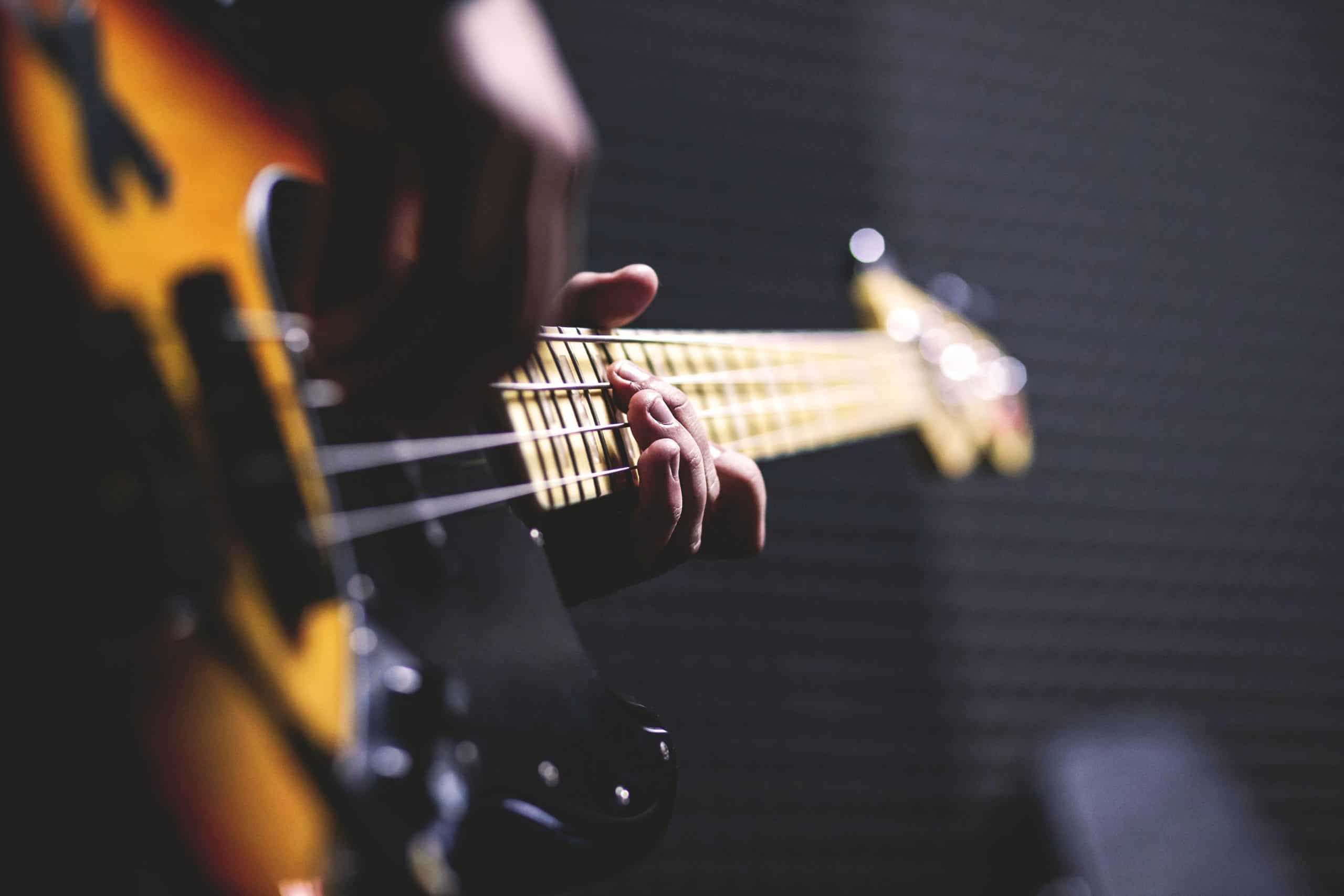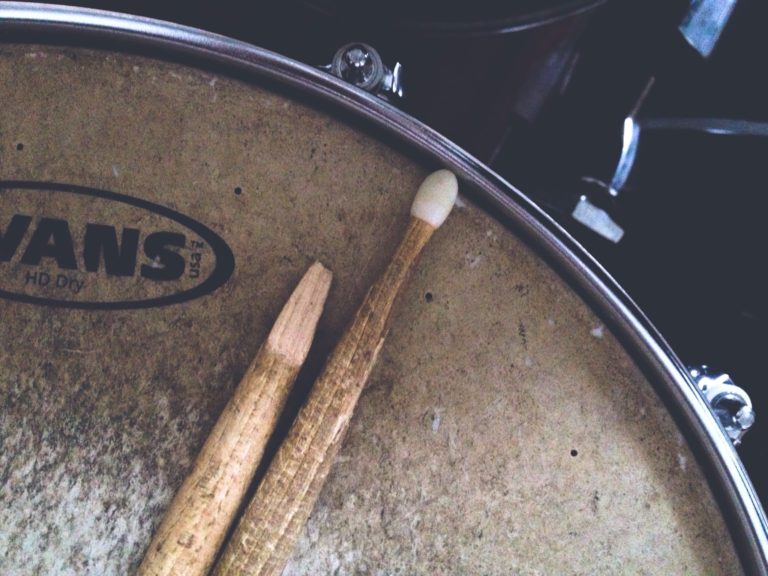Is Bass Guitar Easier to Learn Than Electric Guitar?
When it comes to bass guitars, people are always quick to rag on the players. They may go as far as accusing them of not having enough talent to play.
Don’t associate with these kinds of people.
A better way to phrase that assumption is by asking about the level of skill it takes to start an instrument. NO instrument is easy, don’t fool yourself into thinking it is. But if you see yourself loving bass guitar, you are most likely to make comparisons between electric guitar.
So, is bass guitar easier to learn than the electric guitar? There are no shortcuts here. Both guitar and bass require years of dedication to get it right. Some bass guitars have fewer strings, which do make them less complicated than guitars but basslines can get more difficult as you apply harsher techniques.
Below, we will get into the nitty-gritty details about each and how to choose the best one for you.
What are The Main Differences Between Bass and Electric Guitar?
There are a couple of things that cause significant differences from the beginning. First, the most common type of bass guitar comes in a four-string variety. Guitars come in six strings. While there are some bass guitars up to five or six string options, we will get into those later.
A bass guitar is also much larger than a regular guitar. This size difference is to accommodate the need for deeper sounds. Electric guitars are smaller and produce a higher tone, but not a lighter noise. This tone allows electric guitars to stand out, often taking lead roles and having more solos.
What Instrument Should I Choose?
The bass guitar provides a stronger foundation on which to learn. But for people who have smaller bodies and smaller hands, a bass guitar can be a daunting beast. On the other hand, bigger people may have issues getting their stubbier fingers to handle an electric guitar.
With this in mind, completely disregard everything I just said out of interest. If you are a big person who wants to get into the electric guitar, it’s just another obstacle that you are willing to overcome. If you are a younger person wanting a bass guitar, give it a shot. You may surprise yourself, but the point is to find an instrument that you want to play.
Here’s a video comparing bass and guitar as well. it may help your decision process.
What Is Some Good Advice When Transitioning Between Electric and Bass Guitar?
While it is a different instrument, advice from our article on guitar practice applies a great deal in this situation. Because of this, you will find a lot of crossover between these two articles. We will be going through a few similarities and differences.
- Music scales and music theory both apply the same way. If you want to be classically trained, knowledge of the overall subject of music theory can be handy. Take this into consideration, as learning how to write and play using classical methods gives you a unique perspective on either form of guitar.
- Once you learn the basics of electric guitar or bass guitar, you can transition between the two fairly easily. A bass guitar tends to be heavier and have thicker strings. Many starting bass guitars also have four strings, which makes them less complicated to handle. Some bases will have more strings, but you can start anywhere you are comfortable.
- While most bands may only have you play two to three notes per song, don’t get lazy. If you start to get complacent, your growth stagnates. If you aren’t passionate about the band you are in, you may want to ask yourself the question of why you got into music in the first place. It could be time to try a new band or instrument.
How Long Should I Practice The Bass Guitar if I Want To Be A Professional?
It is generally suggested to practice a minimum of 30 minutes each day. You can increase this to get faster results, but do not downplay consistency over time practiced. Practicing eight hours in one day tends to be less effective than 30 minutes for seven days.
You tend to retain more when you avoid burning out. Below are a few figures based on suggestions from StudyBass.com. These are rough figures based on practicing most days out of the week.
| Study Time | Expected Results |
| 30 Minutes | Below average |
| 45 minutes to an hour | About average |
| Two to three hours | Above average |
| Six or more hours | Professional dedication |
When we compare this to our findings on the guitar, we found it to be reasonably comparable. However, famous guitarists will give you a good bit of variance when it comes to their perspective. We will be going into that topic next.
Useful Tips From Famous Bassists
Below, we will be providing five different tips from established bassists who have been there. If you have ever thought of, or are currently doing, bass guitar practice, these tips can help you get started.
| Bassist | Quote / Advice |
| Les Claypool | Les Claypool suggests that you practice a lot when you are young. He states as you get older, you have to take the time to warm up and “… knock the barnacles off the hull…” |
| Billy Sheehan | Mr. Sheehan says you should practice “everything constantly.” Sometimes to the point where you drive other people crazy. |
| Jason Newsted | As an ex-bassist of Metallica, he felt he had quite a legacy to live up to when it came to the late, great Cliff Burton. He had to “practice, practice, practice,” while also putting his twist on it. |
| Dave Ellefson | Best known for his work with Megadeth, Mr. Ellefson reminds us to stay relaxed so that we can play in the long-game. |
| John Myung | Dream Theater’s John Myung reminds us to be “consistently improving and evolving” while trying to play for at least three hours per day. |
While each bassist has a personal journey that they take to reach what they are today, they do have some similarities worth noting.
The “ten-thousand hours” rule of guitar returns with a vengeance. It would help if you practiced a lot, which is advice any bassist will give you. John Myung says three hours a day while Les Claypool tells us to practice a lot when you are young.
Billy Sheehan’s advice is of particular importance. If you do not feel like you are continually growing, you aren’t going to keep that passion up. Always remind yourself that you are learning something new. If you aren’t, you may have to “mix it up” every once and a while.
What Is The Difference Between A Four, Five, and Six-String Bass
The four-string bass has been around for a long time. By comparison, the five- and six-string bass guitars have only been around in the past forty years. So what makes them different?
In being Captain Obvious, the number of strings differs between a four-, five-, and six-string bass. You may be thinking that getting a six-string bass would be a no brainer. But frequently, that is a bit much for what most bands require out of bass guitars.
Instead, try and focus on the other two. The four-string guitar will be your most natural option, as it is the simplest to understand. However, it may not meet the needs of bands that play harder music. Lower notes are a big part of complimenting heavy music.
Option one in fixing your guitar to meet these lower requirements is related to de-tuning your guitar. You can reach a lower octave of notes by forcing it to go lower. Otherwise, your other option is to buy a five-string instrument. You can go with where you feel most comfortable.
What Are Different Bass Techniques You Can Learn?
Much like with the electric or acoustic guitar, there are a variety of techniques you can learn to add a spin to your bass playing. Many of these techniques are also applicable to other types of guitar. Below, we will go through a list.
- Popping Style is part of “funky melodies,” but creative people have repurposed it for a variety of sources, including metal. This technique involves slapping the low E while hooking your finger underneath your D string. This technique is unique to bass guitars.
- Hammer-Ons involves pressing on the next note you want to play with enough force to forgo needing the pick. This technique is harder on the fingers of bassists because of the thicker strings used.
- Palm Muting involves pressing your palm against the bass to prevent unwanted string noise. It is straight-forward and is accessible on bass and electric guitars alike.
- Slides on a bass guitar can ruin your fingers if you have yet to build up callouses. Try and delay learning this technique until your fingers know the sensation. Once you are ready, the method involves sliding your fingers up or down the string to produce different notes.
Except for the popping style, all of these techniques have significant crossover between each other. You can learn many of these on one and apply them to another. Even some aspects of the popping style can translate over as needed, but it might sound a bit weird.
Conclusion
Bass guitar is a bit easier to get started on, but as we see through the various techniques and experts in the field, you can make it as complicated as you want. It provides you with a proper bass in which to start playing and gives you an excellent opportunity to learn on a less complicated instrument. Just be careful if you have tiny fingers, as you are going to have to build up your strength.
Regardless, there is plenty of opportunities to transition between the two. Techniques you learn on the bass guitar can be transitioned pretty quickly to the guitar. There are a couple of exceptions when applying techniques, but base your decision on what you love, not what someone tells you to do. Keep practicing, stay consistent, and you will find it in yourself to be a bassist that can outperform most guitarists.
Keep it on Bythebarricade.com for tons of interviews, reviews, articles, and photos! Also, “Like” By the Barricade on Facebook to never miss a post.









